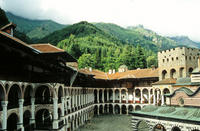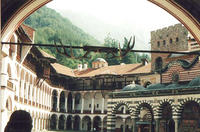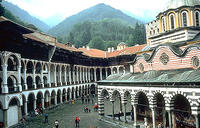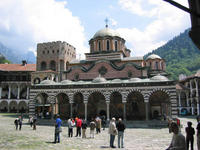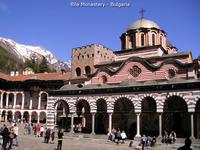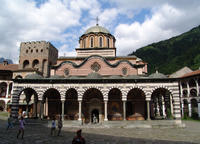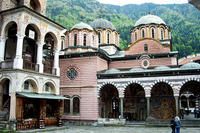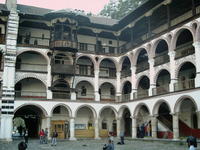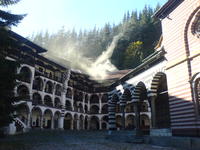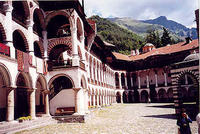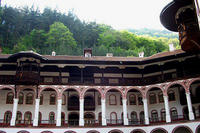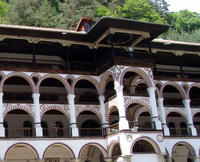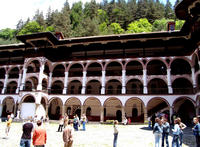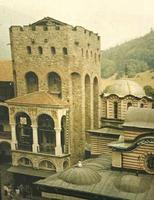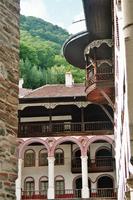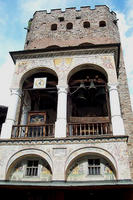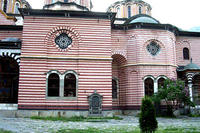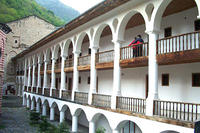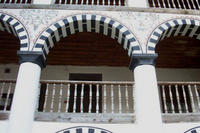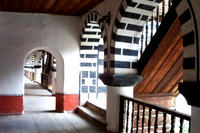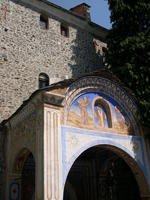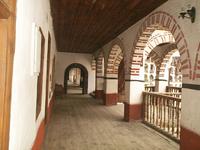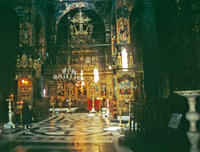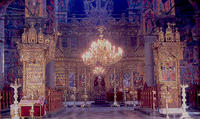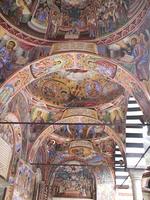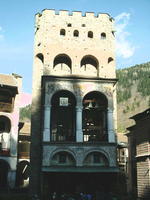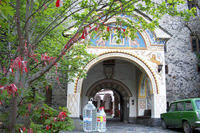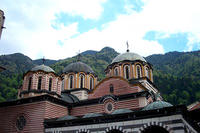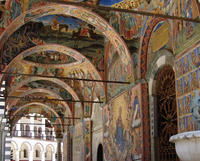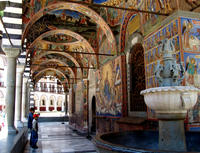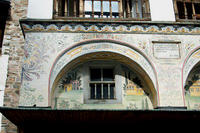You are in: Europe -> Bulgaria -> Rila Monastery, and traditional search or Image Gallery will yield results of this site only
Rila Monastery
| Site number: | 216 |
|
| Type of site: | Cultural | |
| Date: | 10th&18-19th c. | |
| Date of Inscription: | 1983 | |
| Location: | Europe, Bulgaria, Slopes of Rila, valley of the Rilska River, Rila, Kyustendil Province | |
| Video: |
|
Up to 75 images are shown here. Click on each for more details or on Image Gallery for more images.
Six official UN languages:
Arabic,
Chinese,
English,
French,
Russian,
Spanish
Other languages: Afrikaans, Bulgarian, Danish, Dutch, Esperanto, Finnish, German, Hungarian, Italian, Japanese, Lithuanian, Polish, Serbian, Slovenian, Swedish
Other languages: Afrikaans, Bulgarian, Danish, Dutch, Esperanto, Finnish, German, Hungarian, Italian, Japanese, Lithuanian, Polish, Serbian, Slovenian, Swedish
| Description: | Founded by St John of Rila in the 10th century, Rila Monastery was a hermit canonized by the Orthodox Church. St John’s austere dwelling as well as his tomb becoming a holy site was transformed into a monastic complex, which consequently played an important role in medieval Bulgaria’s spiritual and social life. Experiencing fire destruction in the early 19th century, the complex was rebuilt between 1834 and 1862. A distinguishing example of the Bulgarian Renaissance (18th–19th centuries), the monument symbolizes a Slavic cultural identity that followed centuries of occupation. --WHMNet paraphrase from the description at WHC Site, where additional information is available. | |
| The Monastery of Saint John of Rila, better known as the Rila Monastery (Bulgarian: Рилски манастир, Rilski manastir) is the largest and most famous Eastern Orthodox monastery in Bulgaria. It is situated in the northwestern Rila Mountains, 117 km south of the capital Sofia in the deep valley of the Rilska River at an elevation of 1,147 m above sea level. Founded in the 10th century, the Rila Monastery is regarded as one of Bulgaria's most important cultural, historical and architectural monuments. It is on account of this also a key tourist attraction in Bulgaria and Southeastern Europe as a whole. It is traditionally thought that the monastery was founded by the hermit St. John of Rila (Ivan Rilski), whose name it bears, during the rule of Tsar Peter I (927-968). The hermit actually lived in a cave not far from the monastery's location, while the complex was built by his students, who came to the mountains to receive their education. Ever since its creation, the Rila Monastery has been supported and respected by the Bulgarian rulers. Large donations were made by almost every tsar of the Second Bulgarian Empire up until the Ottoman Conquest, making the monastery a cultural and spiritual centre of Bulgarian national consciousness that reached its apogee from the 12th to the 14th century. The complex acted as a depositary of Bulgarian language and culture in the ages of foreign rule. During the time of the Bulgarian National Revival (18th-19th century), it was destroyed by fire in 1833 and then reconstructed between 1834 and 1862 with the help of wealthy Bulgarians from the whole country, under the famous architect Alexi Rilets. The erection of the residential buildings began in 1816, while a belfry was added to the Tower of Hrelyu in 1844. Neofit Rilski founded a school in the monastery during the period. The monastery complex, regarded as one of the foremost masterpieces of Bulgarian National Revival architecture, was declared a national historical monument in 1976 and became a UNESCO World Heritage Site in 1983. Since 1991 it has been entirely subordinate to the Holy Synod of the Bulgarian Orthodox Church. On 25 May 2002, Pope John Paul II, the Slavic Pope visited Rila monastery during his pilgrimage to Bulgaria. He was greeted by the Monastery's igumen, Bishop Ioan, who had been an observer at the Second Vatican Council. --Wikipedia. Text is available under the Creative Commons Attribution-ShareAlike License. | ||
| Source: | http://whc.unesco.org/en/list/216 | |
| Source2: | http://whc.unesco.org/en/list/216/video | |
| Reference: | 1. UNESCO World Heritage Center, Site Page. | |


 NHK World Heritage 100 series
NHK World Heritage 100 series


